Audience expectations are a funny thing. In the world of entertainment, we constantly look for something new and unexpected, but when a new thing is coming from a well-known name or the creators of something well known in a particular genre, we expect the new thing to follow the same conventions. You hear the name Stephen King, for example, and you expect something new in the world of horror, even though he's written books like Rita Hayworth and Shawshank Redemption and The Body, which aren't horror or horror-adjacent. The same goes for a development studio like Neversoft, which is known for the Tony Hawk's Pro Skater series but later pivoted to the rhythm game genre with the Guitar Hero series from the third entry onward. Chip 'n Clawz vs. The Brainioids falls into a somewhat similar situation, as it is by Julian Gollop, creator of the X-COM series, but it isn't a traditional strategy game. It is, however, a fun title if you're looking for something that isn't quite so challenging.
As the story goes, a new element on Earth has been discovered called Brainium. Found in a crystal form, the element is so powerful and precious that a race of alien brains in jars known as the Brainioids have come to Earth to steal it. The invasion didn't go as planned, and the Brainioids have been pushed back. In a final attempt, the aliens have encased large chunks of the planet rich in Brainium within Grav Spheres and lifted them in an attempt to flee with the element. It falls on Chip, a young inventor, and Clawz, his robotic anthropomorphic cat, to free the portions of the Earth from the Grav Spheres and chase away the aliens.
When compared to Gollop's previous works, this is more lighthearted fare. The pair of heroes is presented as goofy but lovable, and they tell jokes that will be funnier to a younger set of players. The aliens are presented as corporate entities that fit into specific personalities but are in it for greed, not for killing people. There's no deep lore to learn or errant threads that need to be followed for a big reveal.
This is a strategy game of the real-time variety, which might throw off people who are looking for another turn-based strategy title from the X-COM creator. While you have no say about where your main base is located, you can place other buildings almost anywhere and facing in any direction you wish. The types of buildings you can place will be instantly familiar with those who dabble in sci-fi RTS games. There are mining buildings for robots to harvest Brainium, and there are different types of barracks to produce melee-, artillery- or firearm-focused soldiers. Gun towers and facilities to produce drones are also available, while the overall objective is to destroy your opponent's base before they do the same to yours.
When it comes to the strategy, what you'll find is mechanically simple. Brainium is the only resource you need to gather, and your miners do a good job of automatically looking for more Brainium deposits on their own when one site runs dry. Units of any type are automatically built and deployed, so you don't need to babysit them unless you want them to go to a specific location. This simplification does have its drawbacks, though. You have a hard limit to how many types of units of a particular building type you can have at any one time. The same limit is placed on the number of building types you can have on the field. The Brainium cap is low enough that you're constantly encouraged to spend, even if you feel that you have exactly what you need for the fight.
The decision to go with a real-time strategy title is dwarfed by the fact that only the bones of a strategy title are present. When you take control of the game, you find that you aren't controlling a cursor but either Chip or Clawz. The viewpoint is that of a third-person action game, and the gameplay mechanics of that genre are also present. In Campaign mode, you run around the environment and jump in real time while collecting stray Brainium on the field and other collectibles. You have a melee attack and a gun with limited ammo, and while both characters can die, it's merely temporary because they can respawn into the field after a cooldown timer expires. The game essentially takes the hero unit idea from a few RTS games and uses it to make an action game. It's an idea taken from a few other strategy games, like Rise & Fall: Civilizations at War from a few decades ago.
The change in perspective means that interacting with the traditional RTS elements is a bit different. You need to bring up a radial menu and select your building from there. An image of the building appears on the field, and you can choose where to place it. You can then place another copy of that building somewhere else or cancel to escape the mode, and then you either continue fighting or go through the process to erect a different kind of building. The process isn't that bad if you're playing with a gamepad and a control scheme the game expects you to be using.
While that element of strategy works, sending units to specific areas is a different story. You can hit a button to bring up a cursor to set up a waypoint for all of your bots to follow and regroup. It's useful for targeting specific areas or enemies versus hoping the AI does it for you. It works fine if you want everyone to be there. If you want to finetune the experience, things become tricky. You can select specific types to go to a beacon, but you can't see who or how many units you're sending until the beacon is placed. If you clear out a beacon, you may find that bots still head in that direction even if there's a more threatening presence close by. The mechanic works, but it feels better to have the game do all of the work for you to get your bots to their destination.
The overall action mechanics in Chip 'n Clawz work fairly well. Your normal movement speed is good enough, and the same goes for jumping, but you'll lament that the jumping only has a decent amount of height and is basic. You lack double-jumping and the ability to climb up ledges. Combat also works fine, but the combo moves that take longer to execute rarely do more damage than the swifter attacks. The game differentiates between the two heroes by giving them different abilities and movement options. For Chip, that means using a hoverbike and being able to overcharge buildings and bots, so they produce and move faster. For Clawz, that means using a jetpack and being able to repair bots and buildings on the field. You can swap between the heroes at any time, but it means that you'll respawn at your base.
The game has two play modes that are staples of the strategy genre. Campaign mode has you going through 23 different levels on your quest to take back the stolen pieces and kick the Brainioids from the planet. While that seems like a decent number of stages, only a little over half is necessary, as a good chunk of the levels are challenge levels that you can play for bonuses. Aside from the presence of some really tricky boss fights, the one major twist in this mode is that you're never equipped with any units when you start a level. You're forced to find statues that give you the plans for unit types that you'll need, and while this is fine initially, it can be a novel yet illogical challenge to always start a stage with nothing and have to scrounge for unit plans.
The good news is that the Campaign plays rather nicely. The arenas are small enough, so traversal from your base to the enemy's doesn't take long. It never feels cramped, since the layout of each map accommodates for the hidden nooks and crannies along the way. The campaign clocks in at around four hours to complete, which is pretty decent considering that new tools and abilities are introduced at a measured pace, and that ends before repetition sets in. Hidden collectibles are always a good reason to replay stages, and even though the boss fights can be very involved, they are the exception, as most stages won't take almost an hour to complete.
There are a few annoyances in the Campaign mode. The first has to do specifically with gun turrets. They're great at attacking normal enemies, but they seem to ignore bosses most of the time. It's a real annoyance when you see a turret not doing anything despite a boss being wide open and within its firing range. The second issue is that you're practically forced to play through the campaign twice to get the highest marks on any level. You can defeat a stage in record time and take no damage while grabbing every collectible present, but you'll only get a five-star rating if you play the game at the highest difficulty level. Considering that most people will play in the normal difficulty level first to get a lay of the land, being forced to play at the highest difficulty isn't a deal-breaker, but it can be annoying.
Versus mode is the other mode, and it plays out exactly as expected. There are six different maps to choose from, while all of the boosts and units from the campaign are available from the start. That's a boon for those who want to go straight into competitive play without being forced to beat the campaign first. You can choose explicitly which of the three boosts you want or have the game randomly choose it for you. It's straightforward, but one thing that makes the mode interesting is the presence of a panic button, which appears only a few minutes into the match for both players. Hitting the button gives you a big boost in resources, but it also gives you only a few minutes to turn things around and secure a victory — or else your base will self-destruct. For a genre that has a tendency for games to go long, this option is a neat alternative to just surrender. It gives you a fighting chance before going out in a blaze of glory.
Both of the game modes have online multiplayer, and even though the pool of players available during the review period was small, online performance was solid in either mode. The game also features local split-screen play for both modes, and this is where the multiplayer really shines. The campaign feels like it was designed with co-op in mind, and while you can play solo, boss fights feel less impossible if you have two players taking care of different parts of the field or assigned to different simultaneous tasks. Strategy games also never feature split-screen play due to how difficult it would be to complete some strategies, but the game's viewpoint and more action-oriented nature make light strategy feasible. It instantly makes this title a good candidate for those who want competitive strategic gameplay without being forced to go online or create a LAN.
When it comes to the audio, it's mostly good. The music is fine, as it does a good job of setting you in the mood for a skirmish without standing out too much. It isn't invisible in your mind, but there's nothing that'll get stuck in your head once you leave the game. The sound effects are also fine, but some of them could use tuning to be punchier, such as the various attacks you do, like firing your gun or using your hammer. The voice acting is good, as the voices fit the cartoon vibe nicely. The only complaint is that some of the lines will repeat often. This is especially true during boss fights in the campaign and more noticeable when you get rid of a boss component that respond to another line. Those snippets start to sound awkward.
Graphically, Chip 'n Clawz is colorful and is reminiscent of a PS2-era platformer with a higher resolution. The use of brighter colors without resorting to cel shading has that effect, as do some of the stylized choices for environment textures. The animation and particle effects are nice, even if they're rather simple when compared to other titles. The game moves at a good frame rate, and while the title suffers from some Unreal Engine hitching every now and then, the effect isn't persistent enough to become more than a nuisance.
Steam Deck users will enjoy the fact that the game runs rather well on the device. The game takes up the screen's full 1280x800 resolution, and with everything set to a mix of low and medium settings, the game runs at a pretty solid 40fps even with lots of activity on-screen, and it still looks good doing so. That's the good news. The bad news is that on the LCD version of the device, the battery life gets eaten up pretty quickly. You can barely eke out a two-hour session on a full charge.
Chip 'n Clawz vs. The Brainioids is a fine game overall. Despite some control issues with the strategy portions, the mixture of third-person action with RTS elements works thanks to the approach of simplicity over complexity. The campaign lasts for a decent amount of time, with collectibles and the quest for a five-star rating giving you a reason to replay the stages. Versus mode works fine, while the addition of split-screen play gives the game some legs if you're having a tough time finding anyone to play with online. Chip 'n Clawz has a few quirks, but it is a fun experience for those looking for a title that's a little more involved than running and bashing in small arenas.
Score: 7.5/10
More articles about Chip 'n Clawz vs. The Brainioids


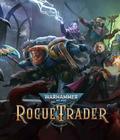
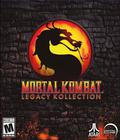
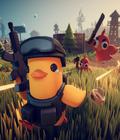


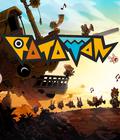
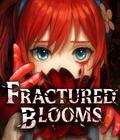

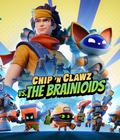 Chip 'n Clawz vs. The Brainioids is a action-packed strategy game that combines thrilling 3rd-person action with the strategic depth of real-time strategy gameplay – all set in a colorful, comic book-style world brimming with a unique cast of characters.
Chip 'n Clawz vs. The Brainioids is a action-packed strategy game that combines thrilling 3rd-person action with the strategic depth of real-time strategy gameplay – all set in a colorful, comic book-style world brimming with a unique cast of characters.





















